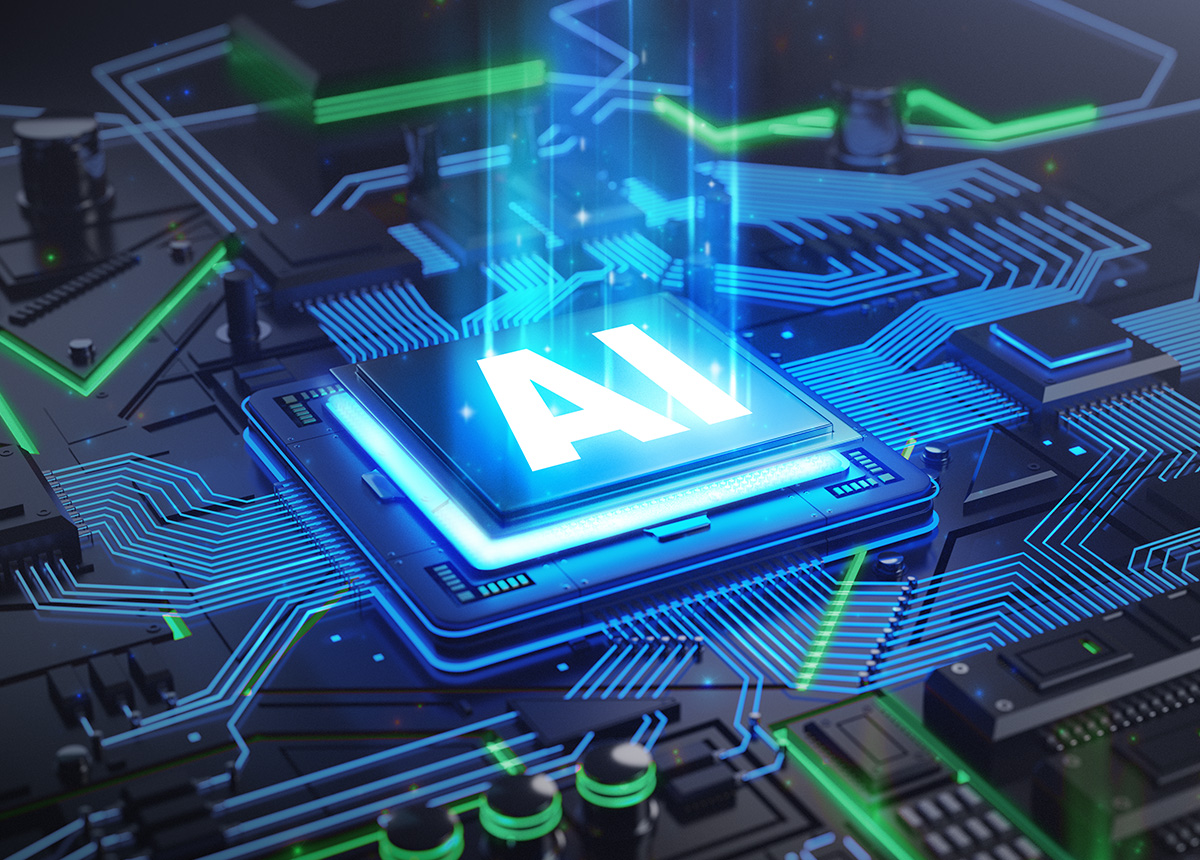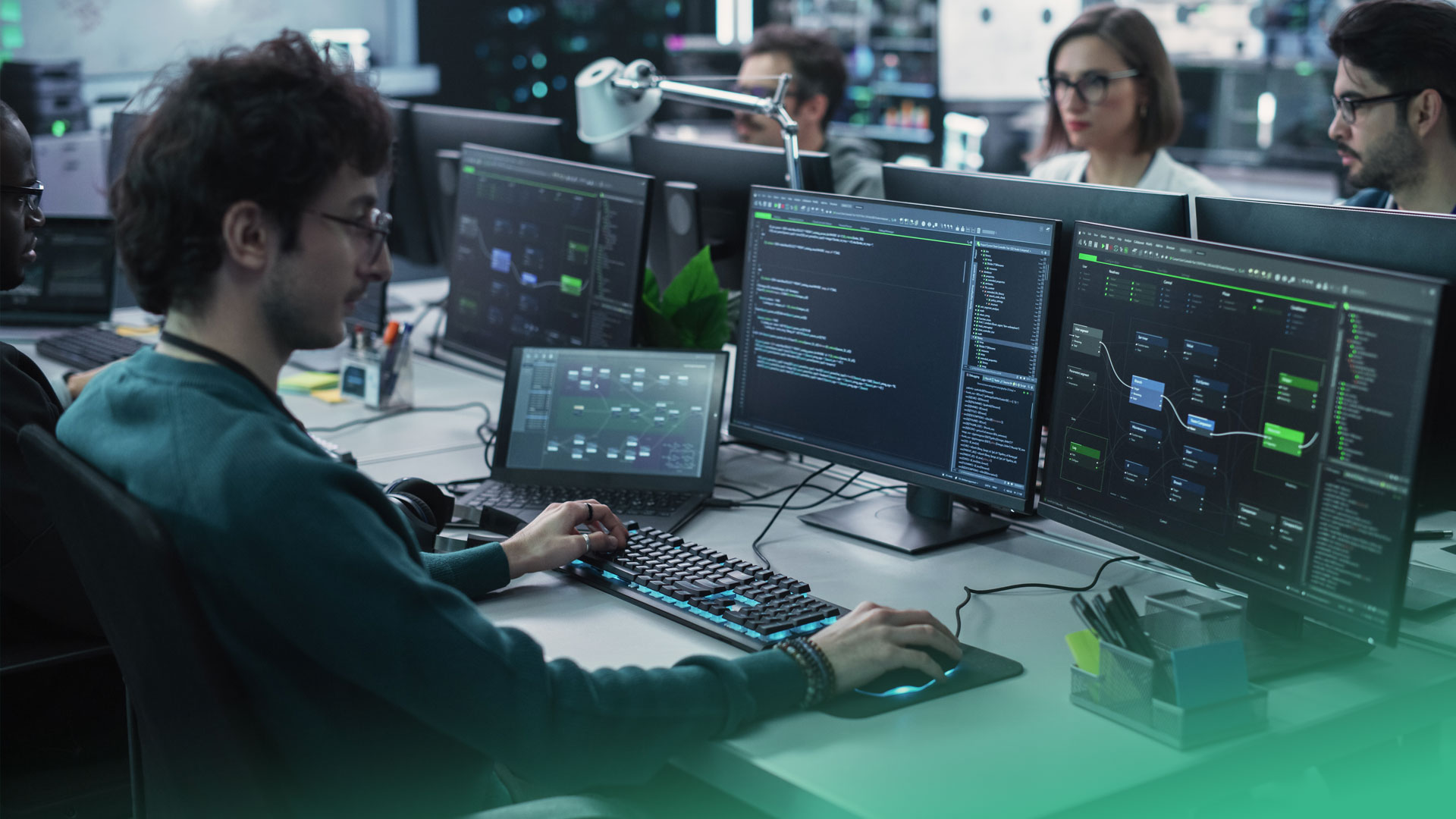
Ever dreamed about offloading all those monotonous tasks onto someone else? And here’s the kicker – that “someone” isn’t a novice intern assigned to take over your routine workload while you’re engaged in higher-priority tasks. Actually, it’s a machine ready to streamline your routine without any unnecessary fuss or hassle. Imagine the possibilities!
Generative AI is one example of such a machine.
According to a recent survey by Statista, 29% of Gen Z, 28% of Gen X, and 27% of Millennials are using generative AI tools on the job.
Another survey aimed to pinpoint the industries feeling the impact of generative AI the most. Here’s the breakdown:
Notably, back in 2022, large-scale adoption of generative AI stood at 23%. Fast forward to 2025, and experts anticipate a significant jump to 46% in widespread AI integration.
Generative AI is not just a buzzword; it is a paradigm shift that is fundamentally transforming the way developers approach coding, design, and problem-solving.
In this article, we’ll explore the essence of generative AI, the tech revolution it’s driving, and share examples of the latest advancements in generative AI showcased at the recent Google Cloud Applied AI Summit, where Kanda’s team had the honor of being present.
Generative AI belongs to a category of artificial intelligence models capable of creating new content, whether it’s text, images, or even code.
In contrast to traditional AI models dependent on rule-based systems or explicit instructions, generative AI learns from extensive datasets to grasp patterns and context. Take GPT-3, for instance—it’s a language model that, thanks to its comprehensive training on varied textual data, has gained the skill to produce coherent and contextually relevant text based on input prompts.
One of the standout applications of generative AI in software development lies in its capability to produce code snippets based on natural language prompts. Now, developers can describe a desired functionality in plain language, and the AI model can independently generate the corresponding code. This not only speeds up the development process but also allows individuals with limited coding experience to express their ideas and see them come to life.
Generative AI proves beneficial in tasks like prototyping, where rapid iterations are crucial. By streamlining the coding process, developers can concentrate more on the conceptual aspects of a project and less on syntactical intricacies, boosting creativity and innovation.
Furthermore, generative AI goes beyond being just a coding assistant; it serves as a powerful tool for boosting creativity and problem-solving in software development. Developers can use these models to brainstorm ideas, experiment with various design options, and even simulate user interactions. The AI’s ability to grasp context and produce contextually fitting responses allows developers to stretch the limits of traditional thinking.
In addition to code generation, generative AI is handy for creating documentation, design elements, and user interfaces. This versatile approach enables developers to consider their projects from a broader perspective, promoting a more streamlined and efficient development process.
The significant impact of generative AI, exemplified by models like ChatGPT, isn’t a distant future scenario—it’s already making waves across various industries. A recent research report by Accenture, titled ‘A new era of generative AI for everyone’ sheds light on how this technology aims to revolutionize work across diverse job categories.
Impacts across industries
The research findings suggest that Large Language Models (LLMs), the driving force behind generative AI applications, will have an influence on every job category. From business and financial operations to management, generative AI is set to reshape work dynamics, accounting for anywhere from 9% to a staggering 63% of a workday. The overall impact extends to 40% of working hours across industries, highlighting the pervasive influence of generative AI in the professional sphere.
Reinventing work
As generative AI becomes ingrained in our professional landscape, every role in every enterprise has the potential for reinvention. The collaborative dynamic between humans and AI co-pilots is forecasted to become the norm, unlocking new realities for human productivity. The transformational aspects include the automation, assistance, and categorization of tasks, as well as the introduction of entirely new responsibilities.
Advising and co-piloting
In advising roles, generative AI is set to act as a constant co-pilot, boosting productivity in areas such as customer support, sales, human resources, and research.
In addition, generative AI will be considered as an essential creative partner, speeding up innovation in design, identity, naming, and content generation. Coders will harness generative AI to enhance productivity, automating code writing and problem prediction. Automation roles will witness a new era of hyper-efficiency and personalization, while generative AI’s capabilities will extend to supporting enterprise governance and information security.
Skills for the future
As the landscape of work transforms, new skills will become crucial.
Individuals will need proficiency in two distinct areas—creating AI and using AI. Technical competencies such as AI engineering and enterprise architecture will be vital, alongside the ability to effectively collaborate with AI-infused processes.
For those workers engaged in cognitively complex and judgment-based tasks, understanding how AI models work becomes essential. Domain experts, such as doctors interpreting health data, will require technical knowledge to confidently engage with AI tools as indispensable “workmates.”
The rise of generative AI will also give birth to entirely new occupations, including linguistics experts, AI quality controllers, AI editors, and prompt engineers.
The EMEA Google Cloud Applied AI Summit held on December 14, 2023, provided a deep dive into the latest developments in generative AI, showcasing tools that are set to redefine the landscape of AI development. Kanda’ team had an honor to take attendance at this event, and here’s a comprehensive look at some of the groundbreaking tools and applications presented during the summit and their potential impact on software development:
Alpha Code 2 is a robust AI model introduced by Google DeepMind. Tested rigorously on industry benchmarks, it comes in three sizes: Gemini Ultra, Gemini Pro, and Gemini Nano. These models boast native multimodal features and advanced reasoning capabilities.
Impact on software development: Offers unparalleled capabilities for handling complex tasks, demonstrating the power of Google DeepMind’s cutting-edge product.
Google unveiled its most powerful Tensor Processing Unit to date, the Cloud TPU v5p. Paired with the AI Hypercomputer, a supercomputing architecture, this TPU is designed for enhanced performance and scalability in AI training.
Impact on software development: Optimizes Google Cloud’s integrated hardware and software stack, promising efficient AI training, tuning, and serving.
Google’s enterprise AI platform, Vertex AI, announced several new and updated models, including Gemini Pro, Imagen2, and MedLM. Gemini’s integration into Vertex AI Search and Conversations marked a significant stride in natural language processing.
Impact on software development: Enhances AI capabilities in diverse applications, offering versatile solutions for enterprises and developers.
Duet AI is a powerful tool for accelerating code velocity. Demonstrated capabilities include code explanation, generation, deployment, and securing applications against cyber threats.
Impact on software development: Streamlines the software development life cycle by assisting developers in various tasks, showcasing potential for increased productivity.
The summit unveiled strategic partnerships with AI21 Labs, Meta, SAP, Workday, and Accenture. The expansion of generative AI services to organizations like McDonald’s, Carrefour, Spotify, and others highlighted Vertex AI’s growing impact across industries.
Impact on software development: Fosters an open and innovative ecosystem for AI development, emphasizing collaborations with industry leaders.
Vertex AI Search and Conversation is a tool designed to build fast and scalable retrieval-augmented generation (RAG) applications. It simplifies the process of building NLP applications, managing data ingestion, query cleanup, semantic search, ranking, and integration with language models.
Impact on software development: Provides developers with a powerful tool for building applications that combine retrieval-augmented generation, enhancing efficiency and scalability.
Google Cloud’s toolkit for generative AI, including Bard, Google AI Studio, Vertex AI, Model Garden, and others, offers resources for developers, including a GitHub repository with samples and notebooks.
Impact on software development: Equips developers with a comprehensive set of tools for working with generative AI, promoting education and practical applications.
The summit emphasized the balance between open-ended and goal-oriented conversations, while observing customer experiences with generative AI and adhering to conversation design best practices.
Impact on software development: Enhances customer interactions and user experiences, providing guidance on effective conversational agent design.
The Kaggle team discussed prototyping machine learning applications using Kaggle’s no-cost resources. The session covered challenges in prototyping, hardware requirements, data selection, development environments, and model considerations.
Impact on software development: Kaggle is a valuable resource for prototyping, offering datasets, community collaboration, and access to GPUs for machine learning applications.
Generative AI is not a fleeting trend; it’s here to stay. The question is, how will individuals and organizations harness this technology to transform their work?
The Google Cloud Applied AI Summit showcased cutting-edge AI models and tools, and as they continue to evolve, the software development landscape marks a new era of innovation and efficiency.
At Kanda, we think that when you mix human creativity with generative AI, it opens up a world of endless possibilities. When we talk to our customers, we don’t get caught up in the hype of AI and machine learning. Instead, we focus on turning these ideas into practical, custom solutions for data challenges.
Our AI and machine learning services are designed to help companies build applications that find hidden data value, make operations run smoother, and create new solutions that transform the way things are normally done. Reach out to us today, and let’s start your journey into innovation with Kanda.



